4A0-C01 Nokia NRS II Composite Exam Free Practice Exam Questions (2025 Updated)
Prepare effectively for your Nokia 4A0-C01 Nokia NRS II Composite Exam certification with our extensive collection of free, high-quality practice questions. Each question is designed to mirror the actual exam format and objectives, complete with comprehensive answers and detailed explanations. Our materials are regularly updated for 2025, ensuring you have the most current resources to build confidence and succeed on your first attempt.
What are the types of routers in an IS-IS topology? Choose all that apply.
Click the exhibit button.
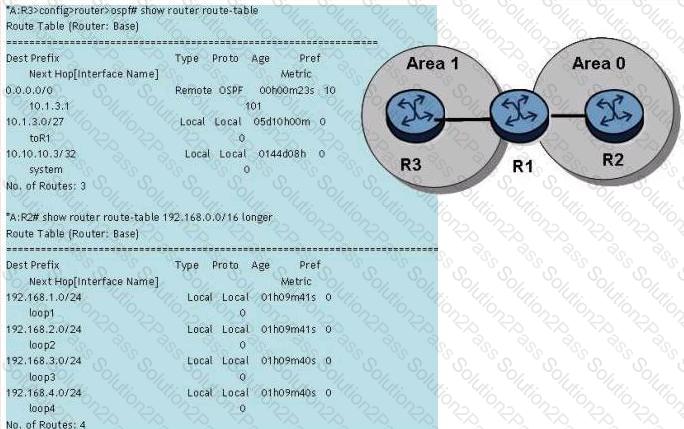
Given the topology and the route-tables shown, which of the following is most likely to be the configuration on router R1?
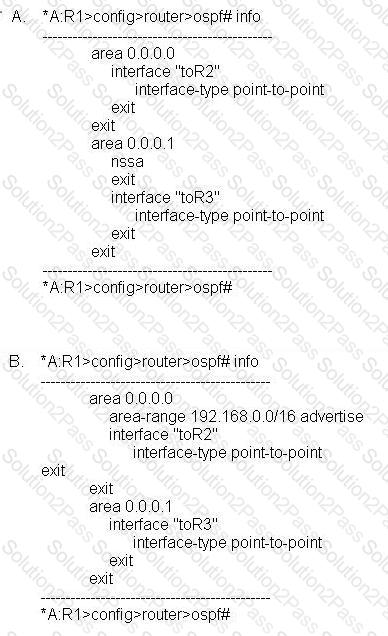
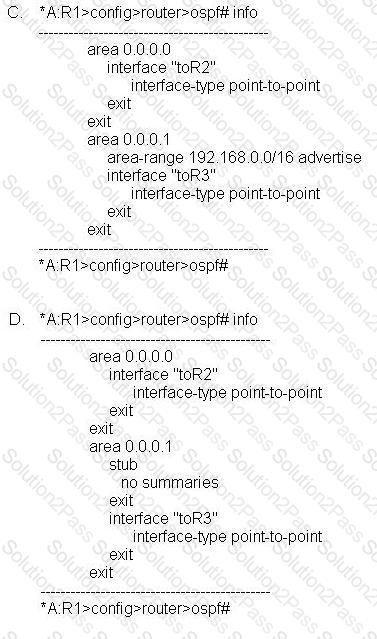
Which of the following conditions will prevent an OSPF adjacency from reaching the full state? Choose three answers.
Which of the following is not one of the MT topologies defined for IS-IS?
Which of the following TLV fields is included in an IS-IS Hello packet?
In an IP datagram, which field identifies the receiving application
What are some of the characteristics of Alcatel-Lucent's implementation of non-stop routing? (Choose two)
What is the value of the protocol discriminator used to denote IS-IS protocol information?
If a Router originates a type 1 router LSA with the E bit set what types of areas can it belong to? Select all that apply.
How are IS-IS LSPs sent on point-to-point links?
Which of the following statements regarding the IS-IS CSNP is false?
In IS-IS, which of the following statements regarding an L1/L2 router is false?
What is the default inbound metric for RIP on the Alcatel-Lucent 7750 SR?
Which of the following statements apply to link state protocol behavior? Choose three answers.
Which of the statements below best describes the operation of the IPv6 anycast address?
A router sets the E bit in the flags of its Type 1 LSA. What does this indicate?
Exhibit
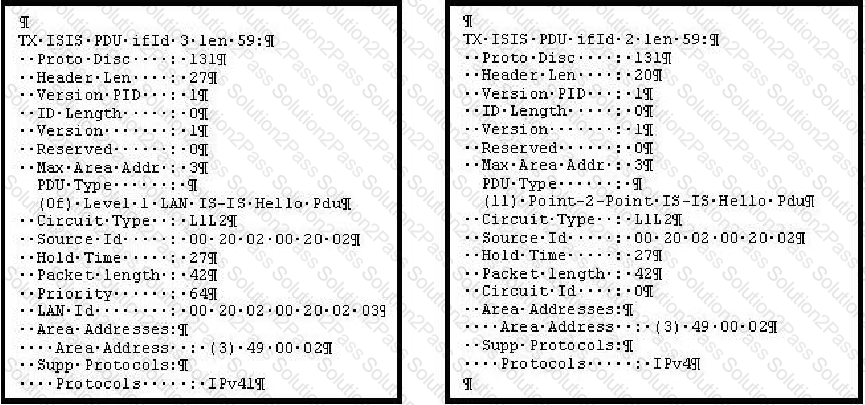
The following IS-IS packets have been exchanged between 2 adjacent IS-IS routers. What type of adjacency will be formed?
Which of the following statements regarding link state protocols are true? (Choose two)
What type of OSPF router generates a type 2 LSA?
What is wrong with the following filter configuration from an Alcatel-Lucent 7750 SR?
RTR-B# configure filter
RTR-B>config>filter# ip-filter 1 create
RTR-B>config>filter>ip-filter$ entry 1 create
RTR-B>config>filter>ip-filter>entry$ match src-ip 172.2.0.0/16
RTR-B>config>filter>ip-filter>entry# action drop
RTR-B# configure router interface toRTR-A
RTR-B>config>router>if# egress
RTR-B>config>router>if>egress# filter ip 1
Which one of the commands below will create a static route to network 2.3.4.0/24 on the AlcatelLucent 7750 SR router?
Two IS-IS L1/L2 routers are in the same area on the same Ethernet segment. How many adjacencies will be formed between them?
What command is used on the Alcatel-Lucent 7750 SR to define the default action to be taken if a packet does not match any entry in an IP filter?
Which of the following LSA types stay within an OSPF area, and are not flooded outside of the area? Choose two answers.
In an OSPF environment, what must a router receive after it sends out an update?
Which of the following statements describe the major features of OSPF? Choose two answers.
Which of the following cannot be used as a matching criterion in route policy statements?
Click the exhibit button.
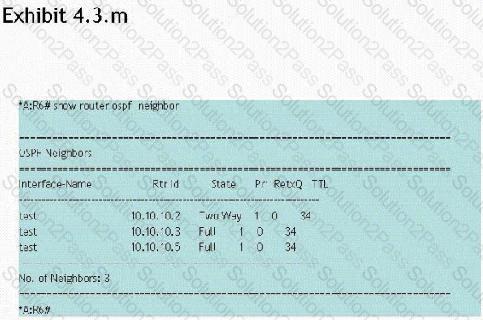
What can you deduce from the show command on router R6?
Which of the following OSPFv3 LSAs have an AS scope?
Click the exhibit button.
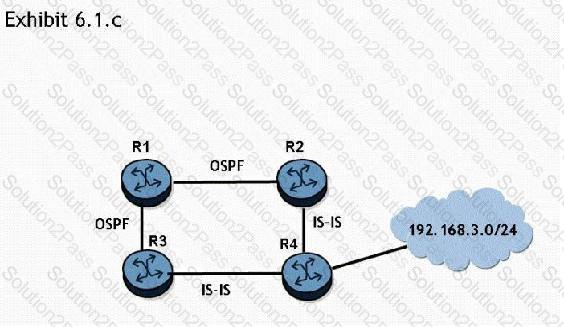
If router R2 redistributes the IS-IS route to 192.168.3.0/24 into OSPF, router R3 preference of these two routes? Choose two answers.
What command will show the IS-IS neighbors, and their status on an Alcatel-Lucent 7750 SR?
Which of the following commands can be used to display the number of SPF computations that have been performed on a router?
Click the exhibit button.
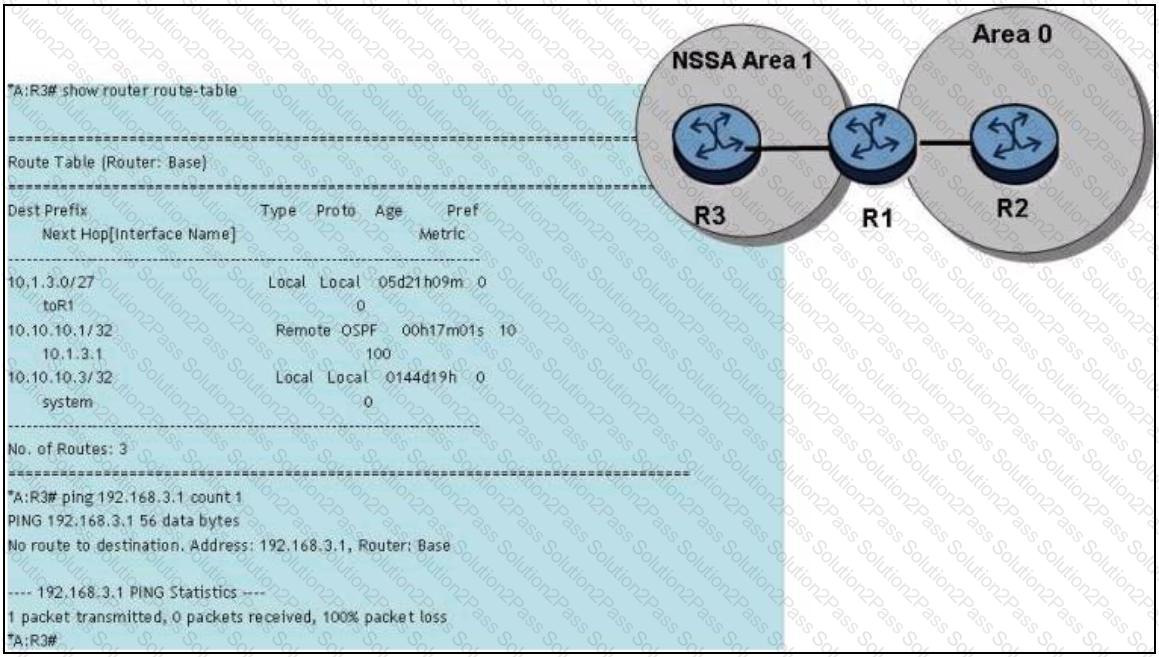
192.168.3.1 is a loopback interface on router R2 and is distributed to OSPF area 0, but the ping fails from router R3. Which of the following is a possible solution to the problem?
Click the exhibit button.
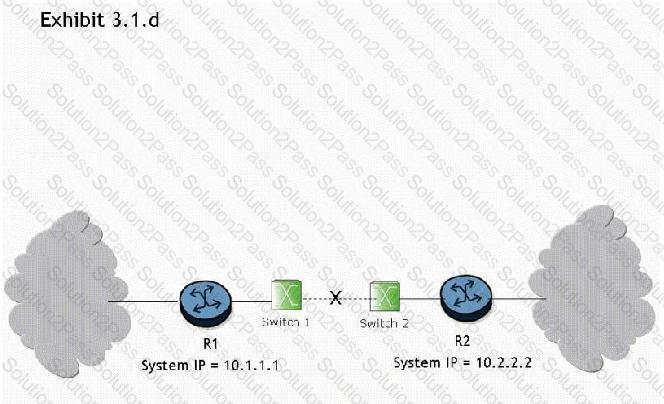
What triggers convergence of the routing protocol when the link between switch 1 and switch 2 goes down?
Click the exhibit button.
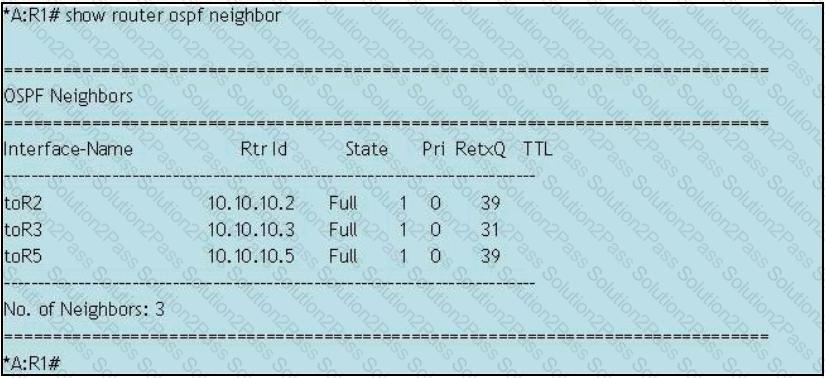
The following command sequence is executed on router R2:
A: R2# configure router ospf router-id 10.10.10.99
A: R2# configure router router-id 10.10.10.66
On router R1, what router ID appears for router R2 directly after these commands are executed?
What are the default Hello and Dead timer intervals for OSPF on the Alcatel-Lucent 7750 SR?
In which of the following types of areas does an OSPF router not set the E bit in its Type 1 LSA?
What address is used when RIPv2 uses multicast to send its updates?
Click the exhibit button.
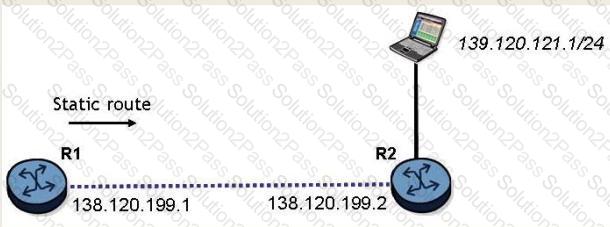
What is the command to configure a static route on the 7750 service router R1 to reach the network behind router R2?
What is the term used for the updates sent by IS-IS?
